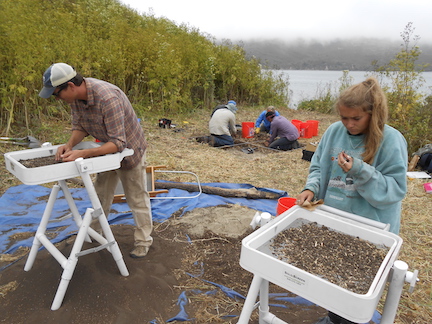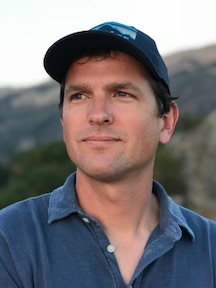By Giannina Ong
Students of the California public school system (and their parents) will recall the magnum opus of state history arts and crafts: a Spanish Mission replica. Fourth graders build an architectural model—either from cardboard, sugar cubes, or a prepackaged set complete with landscaping—resembling one of the twenty-one Franciscan Alta Missions scattered across California. The lesson gleaned, however, is contingent on the teacher’s framing. On one hand, the romanticization of the Spanish architecture and focus on Franciscan agricultural techniques can be depicted as a refuge, even progress, for the indigenous people. On the other, the mass assimilation and widespread deaths of tribespeople liken the Missions to institutions of slavery.
Lee Panich finds these dichotomous histories problematic. “The Missions play into this narrative of native extinction, which is prevalent throughout all of North America. It’s this idea that when Europeans showed up, natives just gave way to progress or succumbed to disease,” he said.
An associate professor of anthropology at Santa Clara University (itself a mission campus), Panich argues these common—yet oppositional—portrayals of life in the Missions mask the reality of Native Californians’ persistence. From historical documents that log the existence of a sweat lodge on Mission land to archeological artifacts such as thousands of beads found on the grounds, the mounting evidence depicts neither a complete extinction of culture nor the people, but rather an evolution of tradition and a struggle for survival.
Instituted in the 18th and 19th centuries, the Franciscan Mission system was not always highlighted as a vital piece of Californian history. At one point left to deteriorate and crumble, the Missions were resurrected to market California as Mediterranean-esque in climate and culture in order to draw new residents in the aftermath of the Gold Rush. Akin to the site of Plymouth Rock and various Christopher Columbus motifs that promote the geography and the history of New England, the idyllic propaganda of a region often leaves out the indigenous side of the story.
Archeological projects at the Missions have occurred since the early 20th century, yet only in the last three decades have moved past investigating them as churches and religious sites. In the rancherías, complexes within Mission grounds that housed native families within apartment-style adobe residences and more traditional style tribal dwellings, obsidian and materials translocated prove that incorporated natives still had contact with their original tribes. Disks with symbols that seem to have served as game pieces are evidence of social cohesion between multiethnic groups—not to be confused with assimilation or ethnogenesis. Bodies buried with beads, which would be against the Catholic doctrines of the time, are found on the grounds and archival materials note returning bodies to tribes for native burials.

Santa Clara archaeology students work with Panich at a mission-period site.
With every dig, Panich and other researchers are finding signs of tribal life imported into these Franciscan surroundings. “What we find is what natives were doing while interacting with the padres is probably very different than what they were doing behind closed doors,” he said. “We are piecing together a more complex picture of life on the Mission, which is changing our research questions.”
That’s not to say that the Missions were less of a disaster for native peoples. Panich points out that the Franciscans aimed to convert Native Californians to Christianity and change their lifestyles. “For native people, it was a time of loss due to both loss of life and knowledge/culture, so today we are in this situation where people want that loss to be acknowledged,” Panich observed. “That’s totally valid. A lot of people died in the Missions, and the way that these sites are treated in popular culture is as these romanticized places, and they don’t acknowledge that darker history.”
Many tribes in California are not recognized, a problem that is attributed to the assumption that certain tribes either all died or were assimilated. Only 109 tribes are recognized in California, and most are located in the Sonoma area north of San Francisco, although a multitude of tribes reside in the areas between the San Francisco Bay Area through Santa Barbara. While tribes in the United States often make the news for accusing the American government of violating tribal sovereignty—what comes to mind is the Dakota access pipeline controversy—Native Californians have the added hurdle of “not being acknowledged as real Native Americans by the federal government and with that they are not eligible for certain rights and sovereignty under government to government relationships that other more prominent tribes have,” Panich explained.
Panich notes archeology’s traditionally colonialist framework; however, in his own work, Panich collaborates regularly with the Ohlone tribespeople on projects located at the two Missions Dolores, Santa Clara and San Jose. Conducting appropriate research that meets tribal protocol for handling artifacts and disseminating information not only is respectful and responsible research, but allows key stakeholders to use the research to advocate for rights and protections. Growing empowerment is evident in moments such as the 2015 protests against the Catholic canonization of Junipero Serra, who is known popularly as “California’s Founding Father” for setting up the first nine Alta Missions, and recently, the educational review—at times, removal—of the fourth grade California Mission unit.
Comparable to the debates regarding statues honoring Confederate leaders in the South, the facilitation of conversations is not an easy task to demand of institutions and the people using these sites. “It’s a back and forth to figure out the appropriate messaging and paths forward. It cuts both ways,” Panich said, “Researchers want to acknowledge the loss, but also the people that are still here. The history is difficult, but it needs to be dealt with and not erased.”
Not a Native American himself, Panich was first turned on to the subject of indigenous people while on a dig in Mexico as an undergraduate, and furthered his expertise while receiving his Ph.D. at University of California, Berkeley by combining archeology with historical components.
Today, Panich is on a mission committed to social justice and engaged in a love for learning. “The bottom line is—with the research we are doing, working with the tribes, and the public outreach—we are trying to generate new knowledge about the past and about the world we live in,” he said. “That’s the key thing: we are excited about the research, and we want to share that excitement with other people, whether that is the students we bring on the sites or reaching out to the communities. We want to honor these complex histories.”
Giannina Ong graduated from Santa Clara University with majors in English, classics, and women’s and gender studies and minors in history and public health sciences. An avid reader and conscientious writer, she was inducted into Phi Beta Kappa in 2018. Santa Clara is home to the Pi of California chapter of Phi Beta Kappa.




